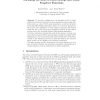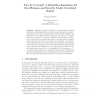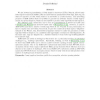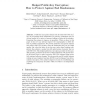11 search results - page 2 / 3 » Chosen-Ciphertext Security from Slightly Lossy Trapdoor Func... |
ACNS
2010
Springer
13 years 9 months ago
2010
Springer
To this day, realizations in the standard-model of (lossy) trapdoor functions from discrete-log-type assumptions require large public key sizes, e.g., about Θ(λ2 ) group elements...
TCC
2010
Springer
14 years 1 months ago
2010
Springer
A family of trapdoor functions is one-way under correlated inputs if no efficient adversary can invert it even when given the value of the function on multiple correlated inputs. T...
IACR
2011
12 years 4 months ago
2011
We put forward a generalization of lossy trapdoor functions (LTFs). Namely, all-but-many lossy trapdoor functions (ABM-LTFs) are LTFs that are parametrized with tags. Each tag can...
ACNS
2004
Springer
13 years 10 months ago
2004
Springer
We study the data privacy of cryptosystems with All-or-Nothing transform (AONT). An AONT is an efficient computable transform with two properties: Given all the bits of its output...
ASIACRYPT
2009
Springer
13 years 8 months ago
2009
Springer
Abstract. Public-key encryption schemes rely for their IND-CPA security on per-message fresh randomness. In practice, randomness may be of poor quality for a variety of reasons, le...




